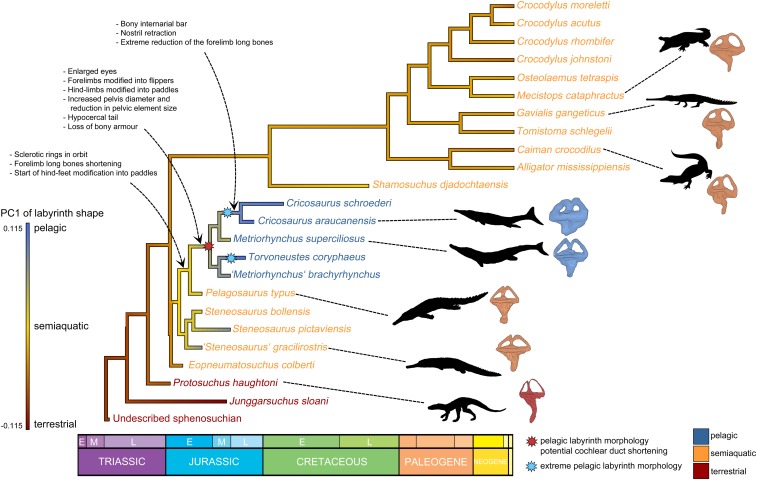Fig. 5.
Pelagic adaptions plotted on a time-scaled crocodylomorph phylogeny. PC1 scores of labyrinth shape, which are correlated with habitat (Figs. 3 and 4), are optimized on the phylogeny to predict ancestral states for the major clades, demonstrating a trend of increasing PC1 scores (increasingly pelagic-shaped ears) in thalattosuchians. Key cranial and postcranial features related to aquatic lifestyles are listed next to the nodes at which they appeared, based on optimizations (43). This demonstrates that thalattosuchians first developed features permitting aquatic locomotion before they developed a modified pelagic labyrinth morphology.

